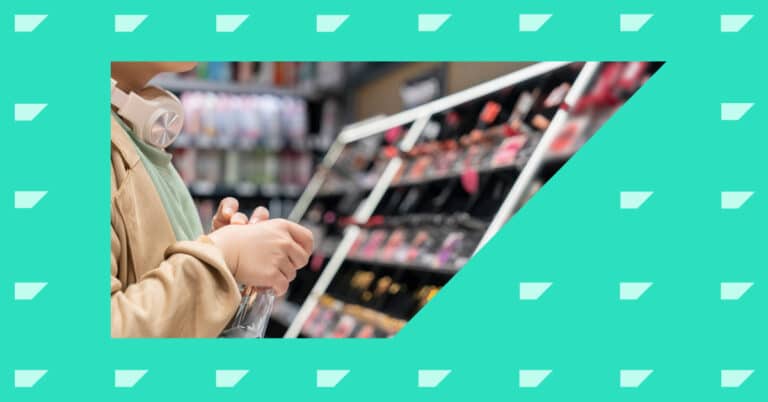Table of Contents
- What Is Customer Loyalty?
- Why Is Customer Loyalty Important?
- 4 Ways to Build Customer Loyalty
- What Is a Customer Loyalty Program?
- Benefits of a Customer Loyalty Program
- The Best Examples of Real-Life Customer Loyalty Programs
- How to Measure Customer Loyalty
- How Emarsys Can Help Your Brand Earn Customer Loyalty
Explore our complete guide to customer loyalty, including how to create more loyal customers, ways to build a customer loyalty program, and other important resources.
What Is Customer Loyalty?
Customer loyalty is a customer’s willingness to interact with a brand or purchase a specific product on an ongoing basis due to the favorable experiences they associate with that company. Loyal customers are your best brand advocates. They add value to and grow your business through word-of-mouth and face-to-face interactions they share with the individuals in their circles. In fact, customer loyalty is imperative to the success of any brand.
If you place customer value at the heart of every product or service you offer, prioritize customer satisfaction, and encourage positive shopping experience across every channel, then you will have customers willing to buy from your brand over and over again.
Why Is Customer Loyalty Important?
Any good brand should aspire to attract and retain satisfied customers to drive continued revenue and conversions. A customer loyalty focus fosters trust between your brand and customers — when customers are encouraged to return to your company, they experience a higher level of value and satisfaction that is superior to the potential benefits they could get from a competitor.
Actually, shoppers spend more time and money with the companies they trust. Data shows that – when compared to new customers – loyal customers spend 67% more on products and services. These loyal customers might make up only 20% of your entire audience, but when they are properly engaged, they can provide up to 80% of your overall revenue.
It’s also 5x easier to retain an existing customer than it is to acquire a new one. By focusing on existing customers, you can encourage repeat purchases and increase the likelihood that those customers will spend more over their lifetime with your company.
In an oversaturated e-commerce market, loyalty is especially critical for better business outcomes. But just how do you convert satisfied customers into loyal, brand advocates?
Find out how more loyal, lasting customers relationships lead to better business results for your brand.
4 Ways to Build Customer Loyalty
There are a number of ways to build customer loyalty. Below, we outline four of the most important ones:
1. Understand what your customers want — and deliver
When it comes to building loyalty, your brand must create omnichannel accessibility and understand the kinds of incentives and benefits your target audience prefers. This will depend on your business model, organizational goals, and what your company has to offer. A fashion retailer may see success from helping their customers accumulate points to be redeemed on future purchases, whereas a travel company may offer flight deals or free flights periodically.
2. Leverage data to personalize your offerings
If your brand isn’t leveraging customer data to personalize incentives, you’re doing it wrong. You’ll need the right mix of true 1:1 personalization in your marketing efforts to put you ahead of the competition. Use customer data to personalize omnichannel interactions and product preferences. This will ultimately lay the groundwork for creating the meaningful connections that lead to lasting loyalty.
3. Encourage customer feedback
Customer feedback and online reviews heavily influence customer loyalty. The process is cyclical — good reviews will drive new prospects to your business; providing top-notch service and products will convert those prospects into customers; and those new customers (if satisfied) will leave more good reviews, further encouraging new shoppers to purchase. The key here is to provide great customer service and pay attention to customer feedback — both good and bad — and adjust accordingly.
93% of shoppers claim they read online reviews as part of the decision-making process, proving this is a tactic that should not be overlooked.
4. Offer a unique customer loyalty program
A customer loyalty program is a cost-effective and easy way to keep customers coming back for repeat business. If your business is able to offer something unique, something that differentiates you from the competition, you may gain the competitive edge. When building out your loyalty program, be sure you’re offering a compelling user experience. Keep it mobile friendly, reward a wide range of value-adding activities (inviting friends, joining your email list, etc.), and ensure consistent, data-backed, personalized experiences are at the forefront of your program.
What Is a Customer Loyalty Program?
A customer loyalty program is an incentive-based program that encourages brand loyalty and long-term business by offering customers coupons, intel, rewards, or even freebies. The most common kinds of loyalty programs are based on three models:
- Points: where customers receive points for activities and can redeem those points for a reward at a later date.
- Spend: where customers who spend a certain dollar amount receive a reward.
- Subscription: a monthly or yearly fee that includes a value benefit like free shipping or discounted services.
An effective loyalty program will combine current marketing initiatives with customer data for a truly personalized omnichannel approach.
Benefits of a Customer Loyalty Program
Brands can increase revenue and customer lifetime value (CLTV) with loyalty. Loyalty program members typically generate 12-18% more revenue per year. To capitalize on your loyalty program, offer varying reward types rather than blanket discounts by using loyalty-specific tactics. Improve customer retention and lifetime value by rewarding customers at every stage of their journey with more personalized omnichannel experiences.
Loyalty programs can help in acquiring a new customer, but they are most impactful when it comes to retaining a customer. These programs are one of the biggest components of an active customer’s shopping experience and offer the perfect way for your brand to show how much you value their repeat business and patronage.
The Best Examples of Real-Life Customer Loyalty Programs
Some retail loyalty programs do it better than others. Here’s a few great examples:
1. Starbucks Rewards
The Starbucks Rewards program provides convenience to coffee connoisseurs. The mobile application allows customers to skip the line and order their personalized beverage before even setting foot in the store. Members also get a free drink on their birthday, free in-store refills on brewed coffee and tea, and accumulated star rewards that can be redeemed for freebies like bakery items and coffee beans.
With the vast number of activities Starbucks rewards through their loyalty program, it’s no wonder 14M+ active U.S. members use the app.
2. DSW VIP
Shoe seller DSW’s VIP program is a point-based loyalty program offering members free shipping on every purchase, incentives for buying online and picking up items in store, birthday coupons, and more. This tiered program has three levels, and the more a member spends the more perks they receive.
3. REI Co-Op Member Dividend
REI’s loyalty program is a little different than most. The REI Member Dividend is a lifetime membership that costs members a $20 signup fee. This fee is immediately matched with an instant 20% off offer, exclusive in-store sale and event invitations, and a 10% dividend on all eligible purchases paid on an annual basis.
Though the membership requires a small initial cost, the investment pays off. For example, if a member spends $100 on running shoes, $500 on a ski outfit, and $400 on biking gear in one calendar year, they’ll receive $100 in rebates at the end of the year. When coupled with REI’s custom MasterCard, member benefits are compounded.
In return, REI collects device and location information, web behavior, personal preferences, financial and demographic information, and sometimes even fitness condition and physical characteristics via their mobile app. Customers are able to select what data they are willing to provide, making them more comfortable sharing their personal info.
4. Nordstrom
Nordstrom’s Nordy Club has a number of unique membership benefits including double-point days, access to an in-home stylist, invitations to special events, easy curbside pickup, and more. In this program, the more a member spends, the better the benefits received.
How do you create true brand advocates using a customer loyalty program?
How to Measure Customer Loyalty
Customer loyalty can be measured using a number of formulas including customer retention rate (CRR), customer churn rate (CCR), and customer lifetime value (CLTV).
Customer Retention Rate (CRR)
Your customer retention rate represents the percentage of customers who have stayed loyal to your brand over a specific period of time. If your CRR is low, it means you are retaining fewer customers and customer loyalty is low. The opposite is true for a high CRR, which means more customers are loyal to your business and your retention rate is high.
You can calculate your CCR using the following equation:

Customer Churn Rate (CCR)
Your customer churn rate, also called rate of attrition, reflects the ratio of customers you acquire and lose soon thereafter. A low CCR equates to high customer loyalty because it means that your brand is losing fewer customers. Conversely, a high CCR implies lower customer loyalty and a high number of lost customers.
You can calculate your CCR using the following formula:

Customer Lifetime Value (CLTV)
Your customer lifetime value is the metric that indicates the average revenue your company can expect from a single customer. A high CLTV means your customers are spending more money at your store and yielding a considerable lifetime value.
The simplified equation for arriving at your CLTV is as follows:

How Emarsys Can Help Your Brand Earn Customer Loyalty
Customer loyalty affects your business’s bottom line, retention, and your ability to scale. Emarsys Loyalty helps you identify and retain more customers, maximize customer lifetime value and drive membership growth, and maximize your current marketing use cases with a built-in loyalty program that can be activated in days to deliver true 1:1 personalized experiences.
If you haven’t already launched a loyalty program, don’t wait. If you aren’t offering one, your competitors will. Start your loyalty program today by reviewing your current loyalty tactics and strategies, and referencing the resources provided above. A loyalty program is key for achieving the predictable, profitable outcomes your business demands, and the personalized experiences your customers deserve.
Handpicked Related Articles:












